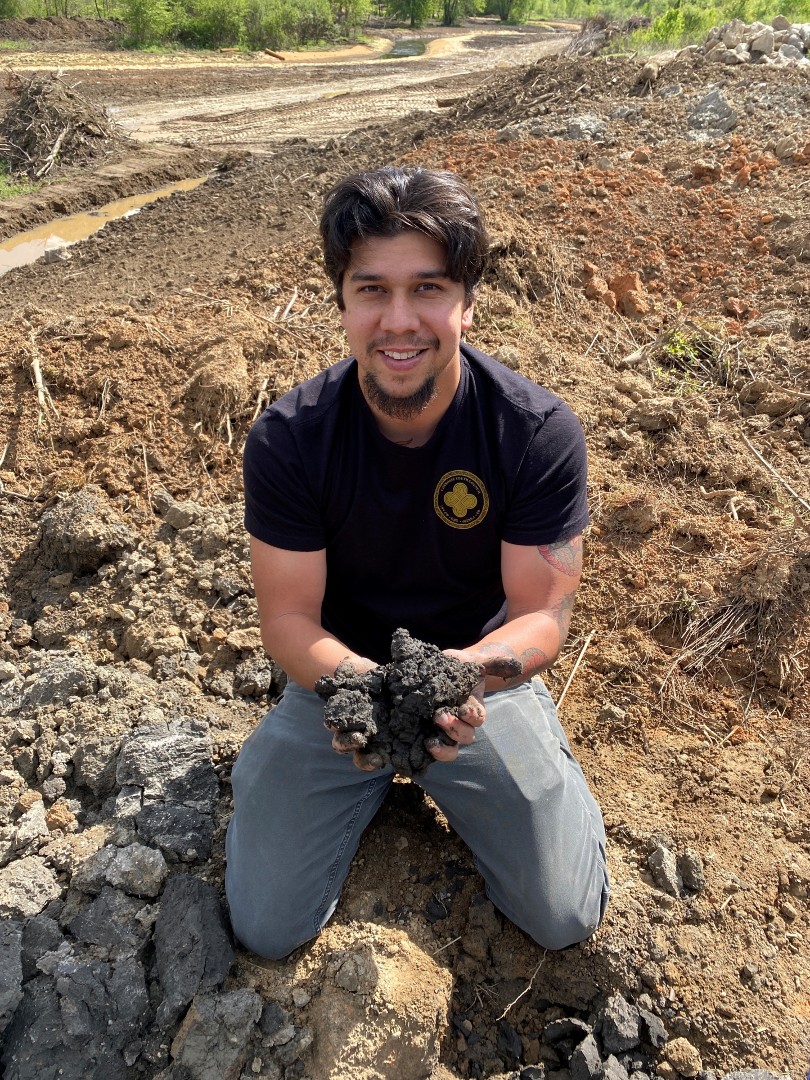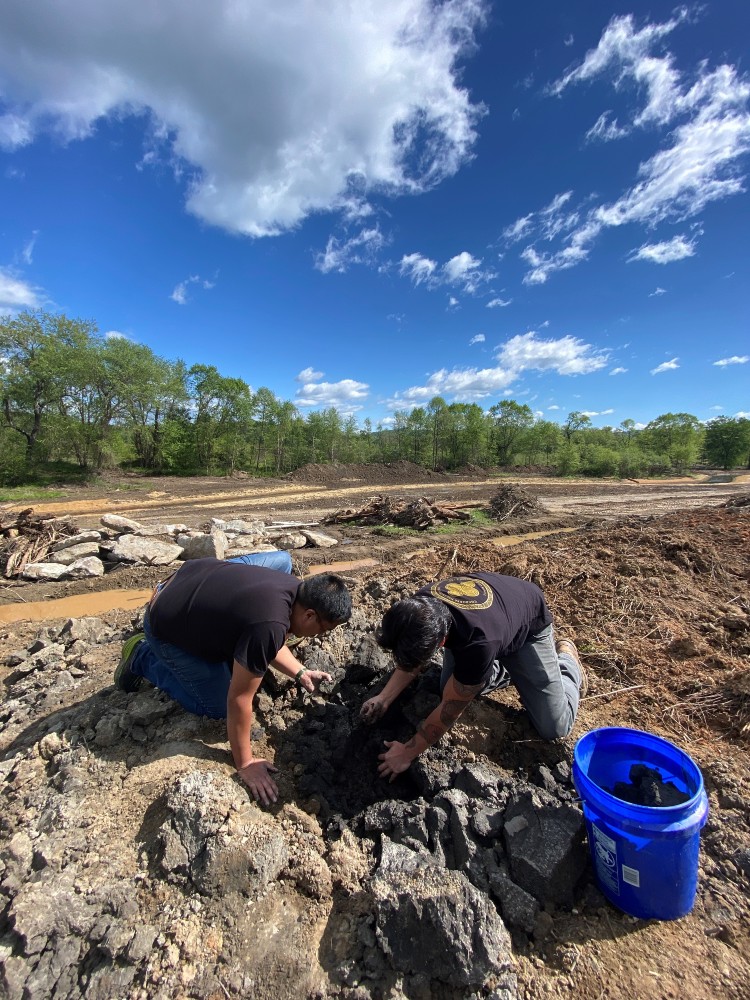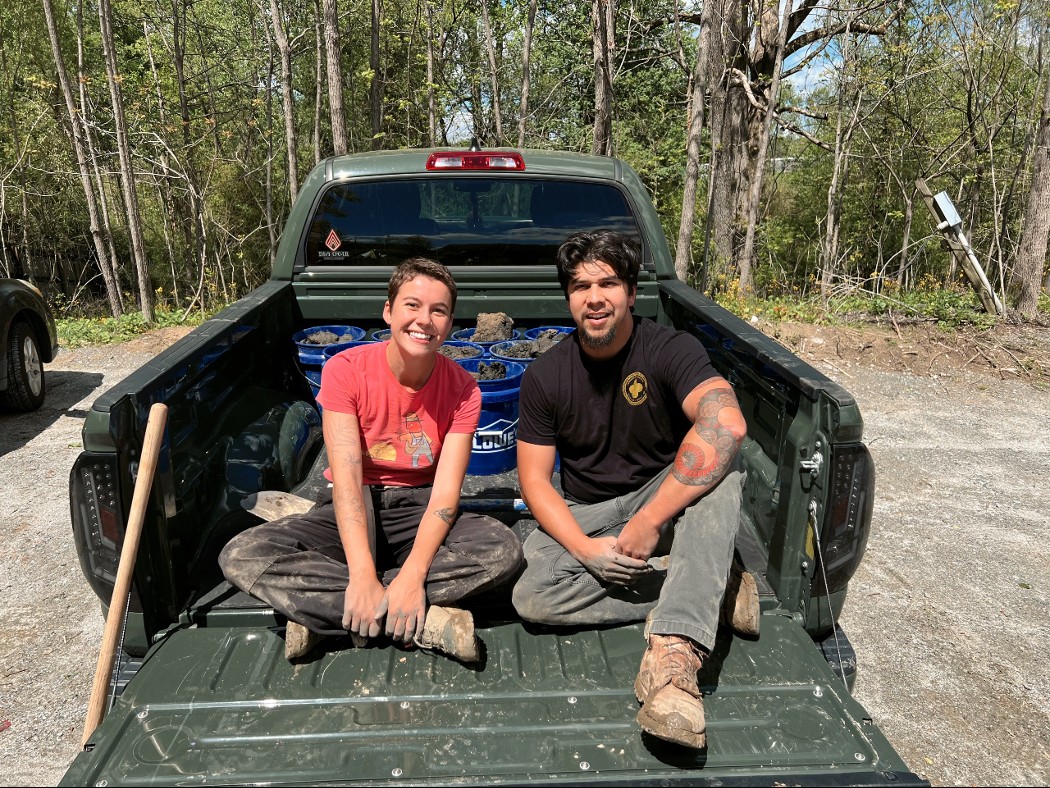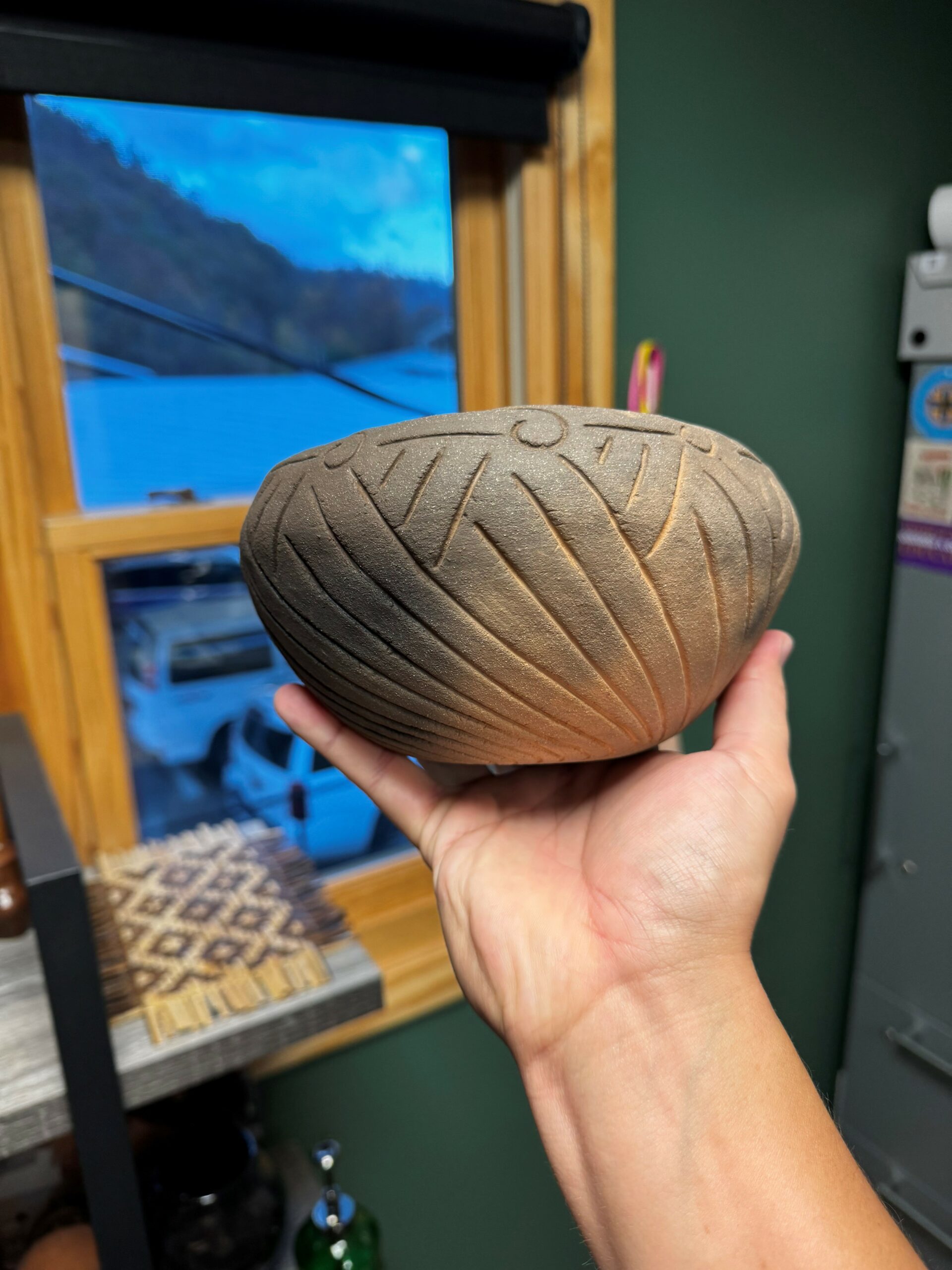Art from the Earth
Nature preserves provide traditional materials for Cherokee artists.

Levi West is a potter who begins with the ground itself—the earth. He has been researching sites around Cherokee towns where his ancestors would have harvested clay for pottery. But even when he knows where to look, he often doesn’t have access to those places, to dig up the ground.
At Pleasant Grove, a Conserving Carolina restoration site in Etowah, he does have access. This summer, on the banks of the French Broad River, he could kneel on the ground and gather high-quality blue clay with his hands.
He was there because of a partnership between the Cherokee and Conserving Carolina to increase the availability of natural resources for artisans. In some cases, the materials needed for Cherokee crafts are so hard to come by that long-held traditions are at risk of dying out. Today, there are only a handful of artists who have mastered traditional Cherokee pottery or basket-making. A new generation of artists needs to learn from them. But, the shortage of resources can make elders reluctant to teach, Levi says.
“Without the resources, the older ones can’t teach because they don’t have the materials that they need. And if the resources are so valuable, do you really want to risk wasting them if the class doesn’t really take it in?”
He says, “Whenever anyone ever asks, ‘What can we do to help?’ or ‘What’s a need?’—it’s access.”
From Rivercane to Coneflower
Conserving Carolina began partnering with the Cherokee after finding a stand of rivercane at another restoration site in Mills River, the Mouth of Mud Creek preserve. Rivercane is a native bamboo that is essential for Cherokee baskets and other crafts. Once abundant along waterways, today rivercane is hard to find. With a grant from the Cherokee Preservation Foundation, Conserving Carolina has been managing the preserve to expand the canebrake, with plans for sustainable harvest by artisans.

Related Article: A New Day for Rivercane
Last year, when Lia Waldrum was an AmeriCorps member with Conserving Carolina, she helped manage preserves like Mouth of Mud Creek. As she talked with Cherokee artisans, she asked them that question: What can we do to help? What needs can we help meet?
Out of those conversations came an idea for an expanded partnership—not just focused on rivercane but a wide range of resources needed for crafts and food. For example, white oak is important for basket making. Although it’s a common species, it can be hard to find young trees that meet the specific needs of basket makers. Other plants are used for dyes—like bloodroot, yellowroot, butternut, and indigo. Important edible plants include walnut, hickory, huckleberry, ramps, cohosh, and coneflower.
Conserving Carolina proposed a yearlong project to expand access to resources on some nature preserves, and the Cherokee Preservation Foundation provided funding. This made it possible to hire Lia in the new role of Cultural Resources and Restoration Coordinator. Through this new partnership, Conserving Carolina is:
- Planting and managing important Cherokee resources on preserves and restoration sites
- Expanding access to resources through long-term sustainable harvest agreements.
- Collaborating on educational programs that focus on preserving Cherokee culture and heritage.
Tinker Jenks, the Senior Program Director at Cherokee Preservation Foundation, said “What we started with was a little patch of rivercane and then Conserving Carolina expanded it to include a lot more. And that can probably even be more as they learn more from the artist community about what they need.”

A Place That Can Be What It Wants to Be
The clay at Pleasant Grove turned up during restoration work. Pleasant Grove is one of several sites along the French Broad River where Conserving Carolina is bringing back a natural floodplain—undoing the impact of berms and drains that aim to keep the land and water separate. By allowing water to flow over and seep into the land, these projects reduce flood risk, improve water quality, and bring back habitat for wildlife. As the crew moved earth to form wetlands and streambeds, they made note of some blue-gray clay—potentially useful to line the bottom of waterways.

Related Article: Restoring A Lost Floodplain
Lia knew that some Cherokee artists are interested in blue clay, although she didn’t know what it would look like. So, she took a five-gallon bucket of grayish clods to Cherokee, NC, to show the director of Revitalization of Traditional Cherokee Artisan Resources (RTCAR), a program connected to the Cherokee Preservation Foundation.
“I didn’t want to be embarrassed that I was carrying this bucket of dirt that meant nothing,” she says. “But then he opened it up and he was like, Oh my God.” It was high-quality blue clay—smooth and pleasant feeling to touch, mostly pure and free of debris.
So, this summer, Levi and his friend, Chris Reed, made the trip from Cherokee, NC, to Pleasant Grove to harvest clay with Lia.
Levi says, “I hadn’t really heard of Conserving Carolina until that day. I was like, you’ve got this property just to preserve it and let it be what it wants to be, for the good of everybody? That was a really cool experience to me.
“We walked the property and I saw all the possibilities for conserving plants and things that are native to here. And there was just a huge deposit of clay.”
Harvesting clay in a river valley that was once lined with Cherokee towns gave Levi a sense of connection with his ancestors. He says, “That’s where my mind goes first. We’re here. So what’s the closest town? Who would’ve been closest to here? Who might’ve been using this? It’s really cool to think about how we all came from these places in this area. There’s something just awesome about that.”


Carrying Tradition into the Future
Working with clay from the ground is a whole different process than using clay from the store. It takes trial and error to discover what you need to add to make the clay workable—maybe mica, or sand, or quartz—and how hot you can fire the pots. As he experimented with the clay from Pleasant Grove, Levi threw a bowl with a design by Kevin Tafoya, inspired by traditional Cherokee designs. Rather than a kiln, he used traditional pit firing with an open fire. It was the first piece he had made from start to finish.

At 34 years old, Levi is a relatively new potter who started studying a few years ago with Tara McCoy at the Museum of the Cherokee People.
“I’m interested in learning all the old stuff but also doing contemporary work as well—redefining what Cherokee pottery can be,” he says. “There’s that traditional side of it, but also how do we move that forward into the contemporary world? I like playing around in both sides.”
Learn more: See Levi’s work on his Instagram account
When he started, very few people were making Cherokee pottery. “I would say the art form was dying,” he says. But when his teacher started offering classes, some new artists took interest, including him.
Similarly, there are some positive signs among basket makers. Tinker Jenks says that improved access to rivercane has led to an increase in artists who know how to work with that material.
She says, “The resiliency of native culture is amazing. With everything that was tried to beat it out and kill it out, it’s still surviving.” Generations struggled to pass on Cherokee language and culture, she says, and because of them, there is a lineage left to revive.
From Levi’s perspective, “There’s a movement—like a cultural revitalization.”
It’s true that younger generations have moved away from traditional crafts, he says. For a time, families made crafts to survive poverty. “A lot of people fed their families by selling baskets or pottery. Then once we were better off, people didn’t have to do that anymore and it’s really hard work.”
But, to Levi and others, it’s worth it to carry on a deep tradition. He says, “Now that we are better off, it’s time that we go back and save that stuff. We need to learn that stuff. That’s a huge part of who we are as Cherokees.”
